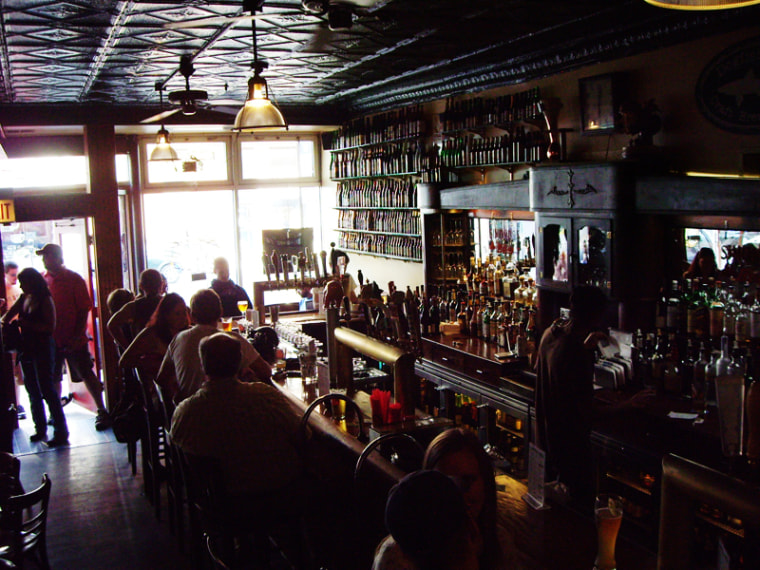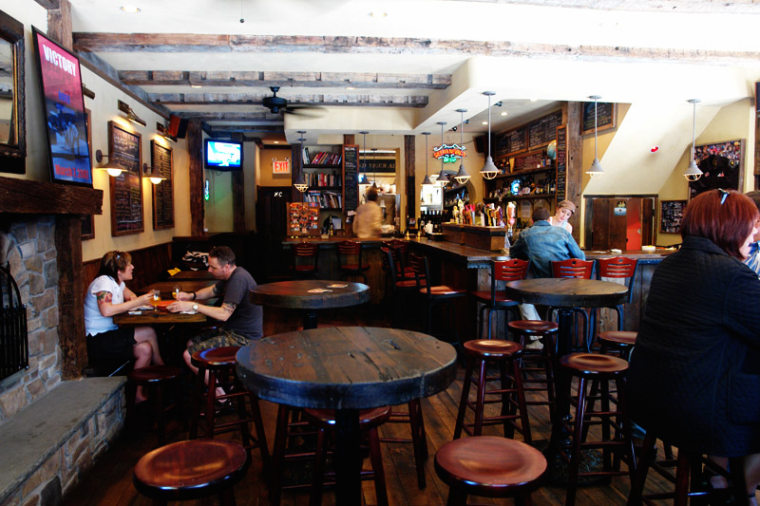Luxury beer’s coming-out party was held on January 25, when Danish brewer Carlsberg announced the restricted release of 600 bottles of Vintage No. 1, a small-batch brew aged in Swedish and French oak casks. The complex, low-fizz libation is as nuanced as Scotch, possessing prune, caramel and vanilla notes, and boasts a knockout-strength 10.5 percent alcohol content—nearly as strong as a glass of merlot.
Yet high proof isn’t Vintage No. 1’s only dizzying quality: Its price tag is 2008 Danish kroner, or about $400, setting a new ceiling for finely crafted yet costly beer.
Carlsberg’s pricey Vintage No. 1 may seem like an attention-grabbing stunt, but it’s actually a sign of beer’s rapid evolution from lowbrow, aluminum-can quaff to top-shelf tipple. Brewers are unleashing their imaginations and aging Belgian ales in bourbon and burgundy barrels, tinkering with wild, untamed yeasts and fashioning coal-dark, chocolatey stouts meant to be cellared alongside that Cabernet sauvignon. Want opulence? Try Boston Beer Company’s 25 percent Utopia, typically priced at more than $100 a bottle. Or Dogfish Head’s limited-release Fort, a strong ale concocted with pureed raspberries.
“The quality of the craft beer available around the country is better than ever,” says Matt Brynildson, head brewer at Paso Robles, California’s Firestone Walker Fine Ales, which crafts wood-cured double ales and mad-scientist experiments. For Eleven, winemakers were called in to blend and precisely calibrate an unlikely combination of barrel-aged Russian imperial stout, imperial brown ale, imperial amber ale and oatmeal stout.
“We broke the taboo that says you can’t blend beers,” says Brynildson. “Instead of being ridiculed for producing bland, watered-down beers, the American craft movement has turned this around and brewers around the world are emulating our newfound creativity.”
It’s paying off. While beer sales overall remained sluggish last year, barely growing two percent, the industry’s shining sector is craft brew. Through the first half of 2007, industry group Brewers Association reported that craft tipples grew 11 percent, and America’s craft-brewing ranks swelled to more than 1,400 microbrewers nationwide. This growth is spurred forward by innovators such as Dexter, Michigan’s Ron Jeffries, who favors time-consuming methods more in line with Slow Foodies than mass producers.
“I think we’re fairly—well, unique may be too strong of a word—but we make fairly different beer,” says Jeffries, whose Jolly Pumpkin Artisan Ales churns out barrel-matured, unpasteurized and unfiltered brews fermented with wild yeasts. Jeffries’ elite elixirs are typically sold in capped, champagne-size bottles adorned with gallery-class illustrations of seafaring vessels, conquistadores and pooches.
“We’re not trying to create straight-ahead flavors—I want subtlety and hints,” Jeffries says. Take, for example, La Roja. This amber ale is blended from beer aged in bourbon and red-wine barrels for nearly a year, resulting in spicy, sour-caramel flavor profiles. Or, sample the light, sour-citrusy Bam Bière farmhouse ale that’s bottle-conditioned, which means it contains live yeasts that cause the brew to evolve just like wine.
Dovetailing with craft beer’s rapid growth and innovation, topflight beer bars have blossomed, eschewing Bud and Miller for heady, high-quality suds.
“We are seeing growth in bars specializing in higher-end beers,” says Paul Gatza, director of industry group Brewers Association. These esteemed alehouses are sprouting across America, from Brooklyn’s shabby chic Spuyten Duyvil, which serves ultra-rare Belgian ales paired with fine cheese, to Seattle’s industrial-cool Brouwer’s Café, featuring homemade sausages, decadent ice cream-and-beer floats and luxe brews like the wood-aged Scaldis Prestige strong ale.

These bars have one thing in common: a “challenging” beer list that goes beyond Stella Artois and Blue Moon. Says Gatza, “A great beer bar includes a mix of local, regional and national offerings, and some mechanism for matching beers and menu items.”
That’s exactly what Michael Roper has accomplished. “Our mission is to make people think of beer in the same way they think of wine,” he says. As the manager of Chicago’s Hopleaf Bar, he eschews the boilerplate bar formula in favor of a more distinguished atmosphere that includes regal beers and finer dining such as braised rabbit legs. Accompanying the grub are superb sipping brews such as Goose Island’s barrel-aged Bourbon County Stout or monk-made, dark-chocolatey Trappist Achel Extra—not canned swill.
The Hopleaf is one of many bars across the country are rising above dollar-beer nights and pitcher specials, citing both economic and gastronomic reasons. Says Roper, “If I have 10 tables full of people drinking $1 Pabst, that’s not in my best interest.” He’s then quick to emphasize craft beers’ superior value and advantages. “A $20 bottle of beer can be astounding. You’d pay so much more for a similar taste experience in the world of wine.”
